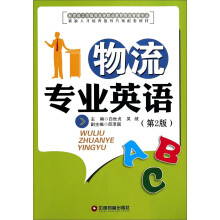PART 1 Basic Knowledge of Logistics
Unit 1 Introduction to Logistics
1.1 Introduction
1.2 Definitions
1.3 Elements of Logistics
Unit 2 Logistics Management and Organization
2.1 Relationships with Other Corporate Functions
2.2 Logistics Organizational Structures
Unit 3 Logistics and Competitive Advantage
3.1 Time and Quality Based on Competition
3.2 Efficiency and Effectiveness
3.3 The Marketing/Logistics Strategic Linkage
3.4 Logistics Leverage
PART 2 Physical Distribution
Unit 4 Warehousing Management
4.1 Definition
4.2 Types of Warehouses
4.3 Warehousing Equipment
Unit 5 Inventory Control
5.1 Inventory Functionality
5.2 Inventory Related Definitions
5.3 Inventory Carrying Cost
5.4 Methods of Inventory Management
Unit 6 Transportation and Distribution
6.1 Importance of Transportation
6.2 Modes of Transportation
6.3 Transportation Decision
6.4 Distribution
Unit 7 Material Handling
7.1 Material Handling Principles
7.2 Handling Systems
Unit 8 Packaging
8.1 Definition
8.2 Functions of Packaging
8.3 Packaging Technology
Unit 9 Information System Functionality and Integration
9.1 Information System Functionality
9.2 Information System Integration
PART 3 Modem Logistics
Unitl0 Supply Chain Management
10.1 Introduction to Supply Chain Management
10.2 Reasons for Developing Supply Chain
10.3 Benefits of Supply Chain Cooperation
10.4 Goals of Supply Chain Management
Unit 11 International Logistics Strate
11.1 Decision-making Process
11.2 Problem Areas and Possible Solutions
Unit12 International Purchasing
12.1 Introduction
12.2 Buying Overseas
References

 缺书网
缺书网 扫码进群
扫码进群






